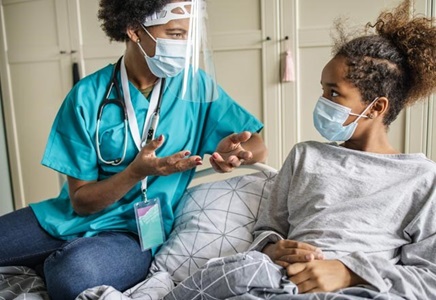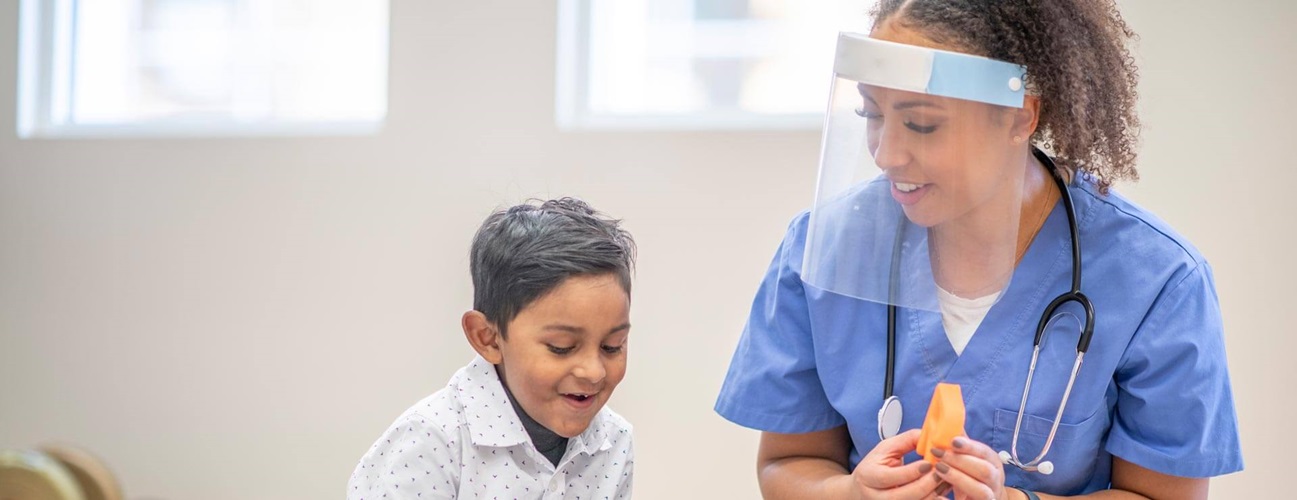Home-Based Pediatric Occupational Therapy
Featured Expert:
Childhood is an amazing time full of growth and learning. The period comes with a lot of “firsts” as children learn new skills. While these skills develop at different rates for each child, there are developmental milestones that children are expected to reach by certain age ranges. These milestones help children develop as they get older.
For some children, injuries or medical conditions may affect their ability to achieve their developmental milestones. In these cases, they might need additional help. Home-based occupational therapy is conveniently offered to treat children from infancy to adolescence. Pediatric occupational therapist Joan Jung-D’Amico explains how treatment helps children reach their full potential and achieve age-appropriate skills for their environment.
What is occupational therapy for kids?
Pediatric occupational therapy helps children improve their ability to do everyday activities and meet developmental milestones. Occupational therapy provides support for both physical and social-development needs. Parent education and continuous practice are important parts of the treatment process. Common treatments include working on feeding skills, developmental milestones, social skills, fine motor skills or hand-eye coordination.
Why would a child need occupational therapy?
Children are referred to pediatric occupational therapy when they have conditions or injuries that affect their development. Some children receive to treatment because they are having trouble reaching developmental milestones. Others may need occupational therapy because an injury or condition is keeping them from activities they were once able to do.
Pediatric occupational therapy is a common treatment for children with:
- Prematurity
- Autism
- Down syndrome
- Dyslexia, dyscalculia, and other learning or sensory processing disorders
- Congenital cardiac disease
- Oral aversion/feeding disorders
- Plagiocephaly
- Fine motor issues
- Cerebral Palsy
- Cancer
Pediatric Occupational Therapy Treatments
Pediatric occupational therapy treatments maximize children’s potential and help them reach age-appropriate activities. Therapy plans are unique to each child, depending on age, condition and need. Treatment can look vastly different for each child. For infants and toddlers, treatment may focus on feeding ability and delay in milestones. Older children are more likely to focus on fine motor skills, eye-hand coordination and play. Treatment for injured children emphasizes returning them to sports or other daily activities.
Occupational therapists evaluate and create a treatment plan that is tailored to the needs of the child and their family. “Treatment has to vary in all of our sessions to really focus on each child’s challenges,” says pediatric occupational therapist Joan Jung-D’Amico. Pediatric occupational therapy is often family and goal-oriented. Therapists collaborate with families to identify their greatest needs and incorporate those into treatment.
Home-based occupational therapy is typically intended as transitional care. “Depending on their needs, we help children get ready for long term services or to return to their school setting,” explains Jung-D’Amico. Children that need more care are often referred to outpatient therapy or an early intervention program.
How can children benefit from in-home pediatric occupational therapy?
Specialized In-Home Care
Home-based rehabilitation therapy allows therapists to tailor treatments in ways not possible in clinical environments. Therapists see the home environment and how children interact with it firsthand. “A family in the hospital can describe their house but actually seeing it in person and being able to be in the home — we can't recreate that,” says Jung-D’Amico. Using this information, therapists develop treatment plans that really take the home setting, family dynamics and child’s temperament into account. The pediatric occupational therapist can use the child’s favorite toys, work in a favorite room and have parents assist in treatments to motivate the child into achieving their goals.
Emphasis on Family Education
Parent education has a larger emphasis in home-based care. “Because we are in the home we can take the time to talk to families in-depth about not only their needs and concerns, but also the treatment plan needed to achieve these goals,” says Jung-D’Amico.
To get the most out of occupational therapy, children and families are encouraged to continue practicing the recommended exercises and activities outside of sessions. The therapist then discusses concerns and progress with the family and adjusts the treatment plan as needed. While parental education is completed in clinical and hospital settings, Jung-D’Amico says it has a larger emphasis and impact in home-based care. “The family is the only focus in the home so we can really emphasize on having the patient develop, thrive and become as independent as possible,” she states.
Children Heal at Home with Pediatric Home Care







